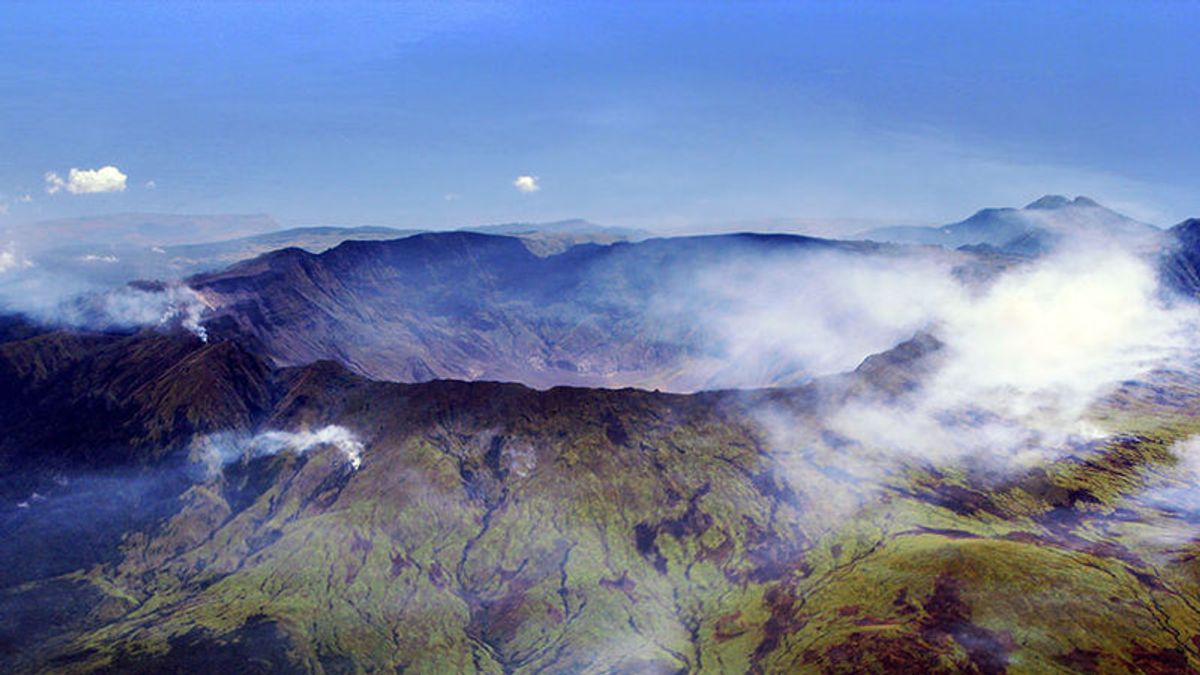JAKARTA – Today's history, 207 years ago, April 5, 1815, Mount Tambora erupted for the first time. The impact of the volcanic eruption on the island of Sumbawa is enormous. It even felt as far as Europe. The victims who died were many.
Crop failure where, livestock died, and gloomy weather blanketed the archipelago to Europe. Instead of stopping spewing the contents of the earth, Tambora is still active until several months later. People also call it the largest eruption recorded in history.
The year 1815 was the most difficult period for all the people of the Dutch East Indies, even Europe. The catastrophic eruption of Mount Tambora became its estuary. However, the eruption was initially thought to be the sound of a cannon. That view was shared by the crew of the British East India Company cruiser, Benares. Incidentally, the Benares ship was docked in Makassar.
On April 5, 1815, the crew heard a loud bang. They were also confused. The boom was thought to be the sound of cannons from the pirate gang. The crew was curious. They tried to check further. In fact, there were no pirate gangs at all.

Not only the crew of the Benares ship. The entire archipelago was made to wonder about the loud booming sound that was almost audible within a radius of 1,000 kilometers. Especially after the thunder of gray weather covered the archipelago sky. It was only a few days later that people learned that the boom was not the sound of enemy cannons. The boom came from the eruption of Mount Tambora.
“Tambora first erupted on the afternoon of April 5, 1815. People in nearby areas reported hearing a loud bang, which they assumed was the sound of cannons being fired. Five days later, the mountain emitted a torrent of smoke and lava that reached a height of forty kilometers. Ten thousand people died in no time burned to ashes by the clouds of melted rock and hot steam descending the slopes."
“A survivor reported seeing molten flames, spreading in all directions. So much dust was thrown into the air that it was said that day turned dark like night. According to a British captain whose ship was anchored four hundred kilometers north of Tambora, his own hands could not be seen. Plants on Sumbawa and the neighboring island of Lombok were buried in ashes, so tens of thousands of people starved to death afterward,” says Elizabeth Kolbert in the book Di Bawah Langit Putih: Hakikat Masa Depan (2021).
Eruption Impact
The eruption affected the area around Sumbawa Island. Poverty is the main disease that lurks the most. Stories of people losing their homes and livelihoods were common after the Tambora eruption.
The eruption did not only leave tears, but also brought about disease and famine. Everyone's fate is uncertain. Otherwise, everyone on the island closest to the eruption couldn't predict how long they would last.
The total number of victims who died, either affected by the eruption or after the eruption had reached 100 thousand people. While those who lose can reach millions of people. Even in Europe.

“But the effects of the Tambora eruption reach much further. In East Java, cows died and crops were destroyed and everywhere roofs collapsed under the weight of the ash. But the ones that suffer the most are the islands that lie under the direct flyway of ash – Lombok, and Bali. All the fields were destroyed, and in the years that followed, famine killed thousands of people.”
“Perhaps half the population of Lombok died from hunger and disease, and in Bali, there were also large numbers of victims. Three years later, visitors are still reporting bodies lying stranded on the beach with no one left to hold even the simplest of cremation ceremonies. In Indonesia, a total of around 100,000 people died as a result of the Tambora eruption and its post-eruption impacts," concluded Tim Hannigan in the book Raffles and the British invasion of Java (2016).
That is the record of today's historical events in Indonesia, April 5, 1815.
SEE ALSO:
The English, Chinese, Japanese, Arabic, and French versions are automatically generated by the AI. So there may still be inaccuracies in translating, please always see Indonesian as our main language. (system supported by DigitalSiber.id)














